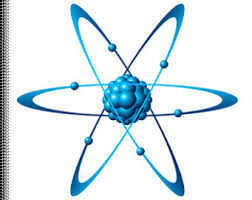A week ago, the Russian military completed the largest spot check exercise it has conducted since 1991. The MOD has put out some information on the scale and units involved. The slides were helpfully reproduced by Ruslan Pukhov in his blog. They are done in the usual Russian style — it's all about how many planes flew, how many tons of equipment were moved, etc. Nevertheless, there are some interesting tidbits. Here are some highlights.
The exercise involved 160,000 personnel from all three military branches. Ground forces from all four Eastern district armies and the 41st army of the Central district were involved, including 9 infantry brigades, the 18th artillery division (based in the Southern Kurils), a tank brigade, 2 air assault brigades, a naval infantry brigade, 5 signal brigades, 2 artillery brigades, 2 rocket brigades, 1 MRLS brigade, 2 air defense brigades, 2 NBC defense brigades, 4 logistics brigades, and 2 equipment storage bases. 12,000 vehicles were activated.
The air force activated 130 aircraft and helicopters from four commands (Long Range Aviation, Military-Transport Aviation, 2nd Air and Air Defense Forces Command — Yekaterinburg, 3rd Air and Air Defense Forces Command — Khabarovsk). The specific air force units involved were the 6952nd LRA Base from Amur Oblast, the 6955th MTA Base from Tver, the 6980th aviation base from Chelyabinsk, and the 6983rd aviation base from Primorskii Krai.
Naval participation included 70 ships from the 36th surface ship division, 165th surface ship brigade, 10th and 25th submarine divisions, 19th submarine brigade, 100th assault ship brigade, 114th coastal defense ship brigade, and the 520th independent coastal missile-artillery brigade.
One infantry brigade arrived by sea, while 30 transport aircraft moved 8,500 personnel over 167 flights. 1000 reservists were involved, from Primorsky Krai. 45 field control centers were activated, most at the brigade level. 8 UAVs completed 22 flights. One of the 12 long range aviation planes failed to complete (or maybe to start?) its flight.
The overall assessment of these exercises from the military has been largely positive, though some areas did come in for criticism. Yuri Borisov noted that 3-4% of vehicles broke down during the exercise, either because of errors made by the operators or because the equipment was old. This is not ideal, but is certainly a better statistic than in the bad old days a decade ago. Shoigu criticized the state of the communications system, noting that military communications are only 18% effective. It's not clear what that number actually means, but it's clearly not good. Marksmanship also came in for criticism, in part because of a lack of practice. He was pleased with military transportation, highlighting in particular that railroad transportation functioned at almost double the allotted rate of travel (1000km/day vs 600km/day). He also noted that changes may be made to the structure of the air force, primarily by dividing up the air bases that were created a few years ago and and re-opening some of the military airports closed by Serdyukov.
Dmitry Gorenburg is a Senior Analyst at CNA blogging for PONARS Eurasia on military and security affairs in Russia and Eurasia. This comment is also available on Russian Military Reform.










